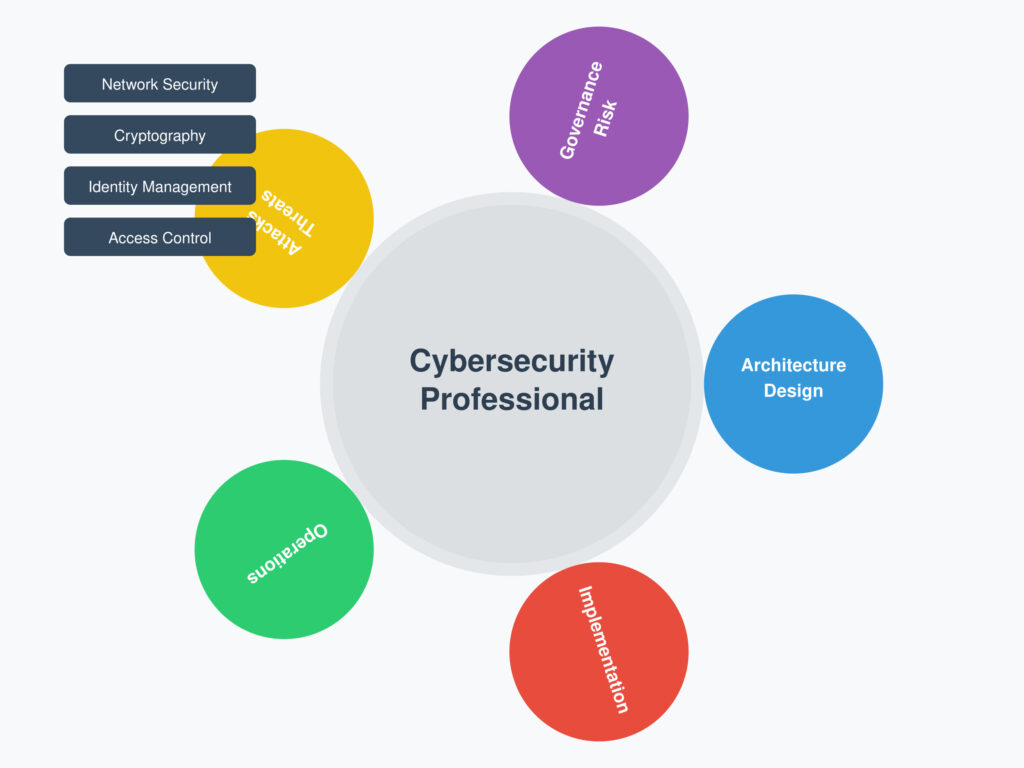1. What is CompTIA Security+?
CompTIA Security+ is a globally recognized cybersecurity certification that validates your ability to protect networks and systems. It’s ideal for beginners and IT professionals looking to specialize in security.

Key Features:
- Vendor-neutral and widely accepted in the industry.
- Focuses on foundational security skills.
- Approved by the U.S. Department of Defense.
Why Choose Security+?
- It’s a stepping stone to advanced certifications like CySA+ or CISSP.
- It emphasizes practical, hands-on skills to solve real-world problems.
- Recognized by employers globally.
2. Why is Security+ Important?
The demand for cybersecurity professionals is rising due to increasing threats. Security+ equips you with skills to combat these threats effectively.
For Individuals:
- Kickstart your cybersecurity career.
- Qualify for roles like Security Analyst, System Administrator, and Network Administrator.
- Gain in-demand skills applicable across industries.
For Organizations:
- Protect critical assets and prevent data breaches.
- Ensure compliance with standards like GDPR, PCI DSS, and HIPAA.
3. Overview of the Security+ Exam (SY0-701)
The Security+ exam tests your ability to manage and mitigate security risks.
Exam Details:
- Questions: Up to 90 (multiple-choice and scenario-based).
- Duration: 90 minutes.
- Passing Score: 750/900.
- Cost: ~$392 USD (varies by region).
Domains Covered:
- Threats, Attacks, and Vulnerabilities (24%): Learn to identify and mitigate threats.
- Architecture and Design (21%): Secure cloud and hybrid infrastructures.
- Implementation (25%): Apply security solutions and cryptography.
- Operations and Incident Response (16%): Handle incidents and analyze threats.
- Governance, Risk, and Compliance (14%): Understand laws, policies, and risk management.
For more details, you need to visit the CompTIA official website as exam fees and the number of questions can change over time.
4. Who Should Pursue Security+?
Security+ is suitable for:
- Beginners exploring cybersecurity.
- IT professionals expanding their expertise.
- Students starting their careers in security.
- Experienced workers seeking formal certification.
Recommended Knowledge:
- Basic IT and networking concepts.
- (Optional) CompTIA Network+ certification.
- 1-2 years of IT support or administration experience.
5. Tips to Prepare for the Security+ Exam
- Understand the Exam Objectives:
Download the official objectives from CompTIA’s website to guide your study. - Use Quality Resources:
- Study guides (e.g., CompTIA Security+ Study Guide).
- Online courses (Udemy, Coursera, LinkedIn Learning).
- Webinars and video tutorials.
- Practice Hands-On Skills:
Use tools like VirtualBox or VMware to simulate secure setups. Practice configuring firewalls, encryption, and monitoring tools. - Join Study Groups:
Engage with online communities (Reddit, Discord) for support and insights. - Take Mock Exams:
- Identify weak areas through practice tests.
- Use platforms like ExamCompass or MeasureUp.
- Create a Study Plan:
Dedicate time each day to specific topics. Consistency ensures retention.
6. Cybersecurity Basics: The CIA Triad
The CIA Triad is the foundation of cybersecurity.
- Confidentiality: Ensure data is accessed only by authorized users.
- Methods: Encryption, access controls.
- Integrity: Protect data from being altered or tampered with.
- Methods: Hashing, checksums, digital signatures.
- Availability: Ensure systems and data are accessible when needed.
- Methods: Backups, redundancy, failover mechanisms.
Example:
In online banking:
- Confidentiality: Only the user sees their account details.
- Integrity: Transactions remain accurate.
- Availability: Services are accessible 24/7.
7. Why Start With Security+?
Security+ builds your cybersecurity foundation, covering essential topics like risk management, encryption, and network defense. It prepares you for advanced certifications and opens doors to high-demand roles.
Next Module:
In Module 2: Threats, Attacks, and Vulnerabilities, you’ll explore the most common threats and learn how to counter them effectively.